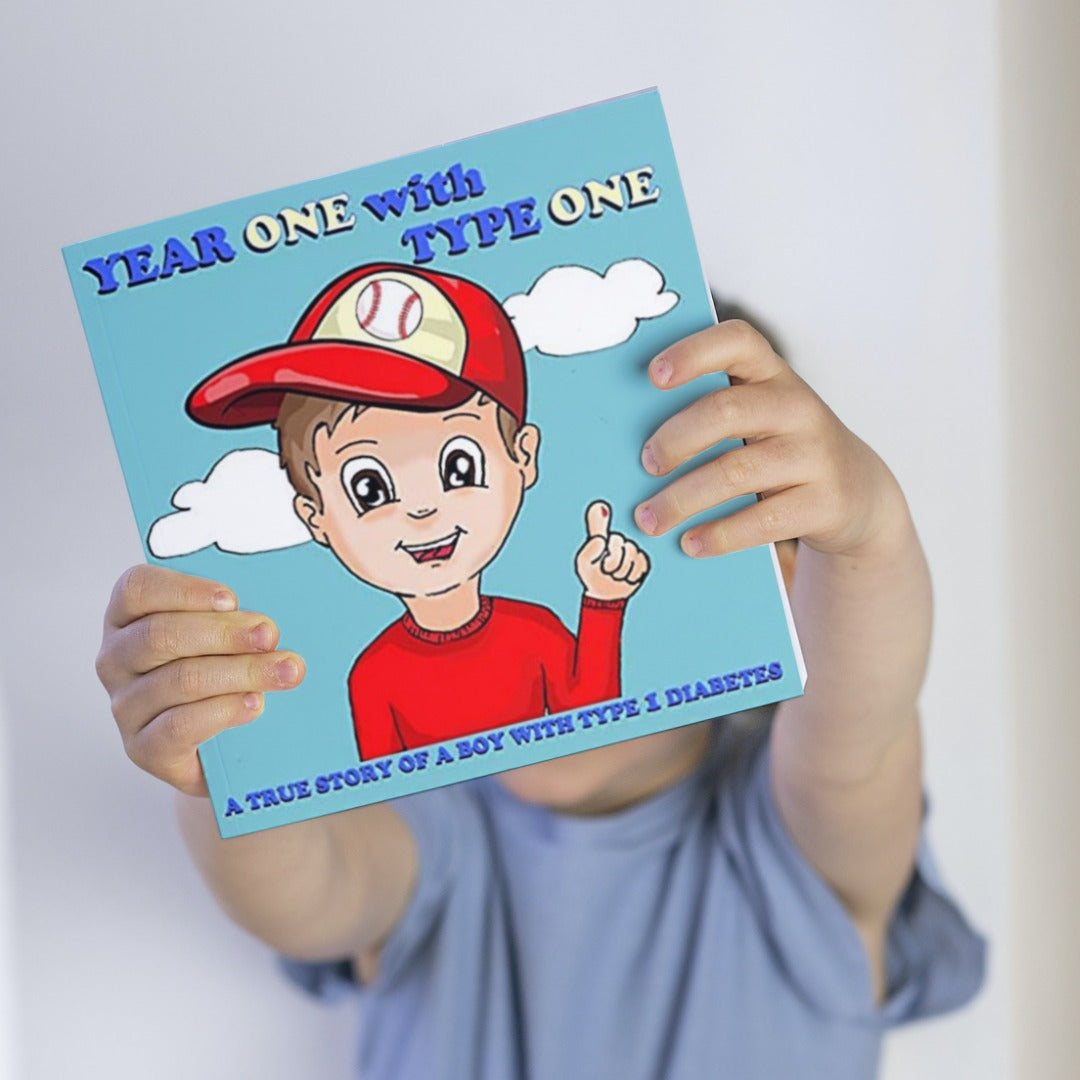Year One with Type One: A True Story of a Boy with Type 1 Diabetes
by Mike Suarez
Recommended for:
1) The shock of diagnosis
The story begins with the confusion, fear, and hospital experience of diagnosis. Suarez captures the whirlwind of new information—blood sugars, insulin, carb counting—and the emotional punch of realizing life has permanently changed.
2) Learning as you go
The first year is presented as a series of trial-and-error lessons: nighttime checks, food challenges, school adjustments, sick days, and technology decisions. The book highlights how much of parenting a child with T1D is learning on the fly.
3) The family journey
Suarez emphasizes that type 1 diabetes impacts the whole family. He describes the roles of parents, siblings, extended relatives, and community, showing how everyone adapts to support the child.
4) Emotional highs and lows
The book is candid about frustration, exhaustion, fear of lows, and the stress of constant vigilance. But it also highlights resilience, small victories, and the joy of seeing the child continue to thrive.
5) Finding community and hope
Suarez encourages families to seek out other parents of children with diabetes, support organizations, and educational resources. He stresses that no one should feel they are navigating this alone.
Honest and relatable. Suarez captures the real emotions of the first year—something many parents will immediately identify with.
Narrative style. The storytelling makes it easy to read and comforting, especially for newly diagnosed families.
Practical takeaways. While primarily a memoir, the book includes lessons learned and advice parents can apply.
Hopeful tone. Despite the challenges, the message is clear: kids can live full, joyful lives with T1D.
Not a medical guide. The book shares experiences, not clinical instructions. Parents must rely on their care team for specifics.
Personal lens. It reflects one family's story; not all children or families will face the same struggles or solutions.
Limited scope. Covers only the first year, so families with older children or teens will need additional resources.
Note: This is general information, not medical advice. Always follow your child's diabetes care team.
How to use the book
For perspective. Read in the first weeks after diagnosis to see what another family's journey looked like.
As reassurance. Use the book to remind yourself that challenges are normal and survivable.
For family discussion. Share passages with grandparents, relatives, or siblings to help them understand what you're going through.
Key lessons families can take away
- It's okay to feel overwhelmed—the learning curve is steep for everyone.
- The whole family will adapt and find a new rhythm.
- Community and connection make the journey easier.
- A child can still thrive, laugh, and be a kid—T1D is part of life, not the whole story.
Best for: Parents in the first months after diagnosis, when the emotional impact feels heaviest.
Pairs well with: Practical guides like *The Type 1 Life* and *Kids First, Diabetes Second* for actionable strategies, and emotional workbooks like *The Caregiver's Confidence Guide*.
Unique role: It's one of the few memoirs written by a parent about the diagnosis year, offering comfort through shared experience rather than prescriptive advice.
Year One with Type One is an honest, heartfelt companion for families in the turbulent first year after diagnosis. It doesn't give medical protocols, but it provides something equally valuable: emotional validation, shared experience, and encouragement that life with T1D is manageable.
For parents seeking to feel less alone, this book offers a powerful reminder that others have walked the same road—and made it through.
